Taking Measure
Just a Standard Blog
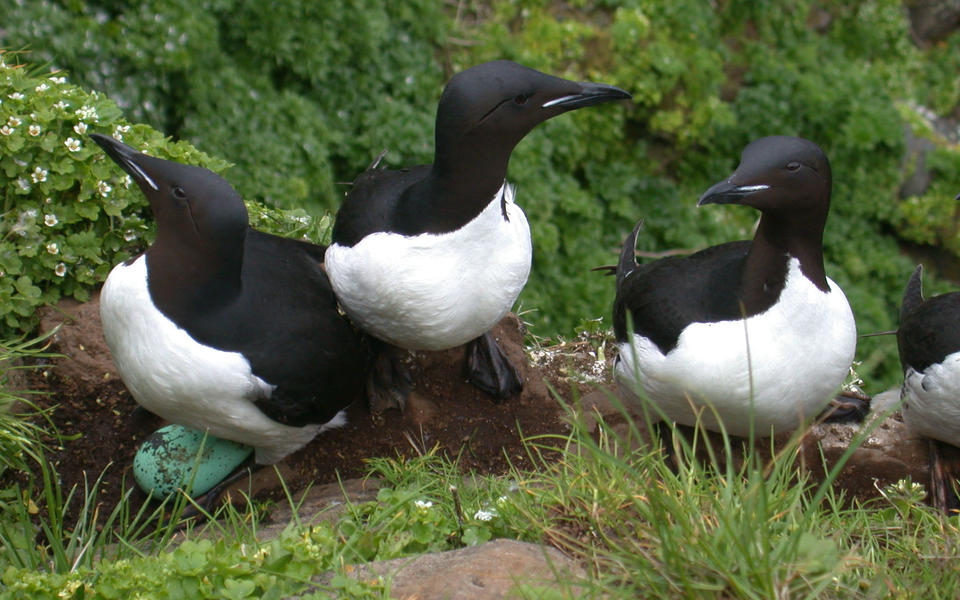
Thick-billed murres with egg at St. George Island, Alaska.
How can one deny the majesty of seabirds soaring over the ocean or diving underwater to capture prey? That said, collecting seabird eggs to preserve them to learn about contaminants in the environment is not what I thought I would be doing as a marine biologist. Nor is it what comes to mind when one thinks about a national measurement institute such as the National Institute of Standards and Technology (NIST). Yet, for two decades, seabirds have been an important component of science at NIST.
While seabirds spend most of their lives either flying above, floating on, or diving to the depths of the oceans, they do come ashore to breed, and thus they are exposed to the air, land and sea. Seabirds also feed on a wide range of foods, from berries, crustaceans (shrimp and crabs) and fish to deceased marine mammals, so their tissues can reflect the health of entire ecosystems. Some seabirds and eggs are important subsistence foods, and thus contamination of their tissues by human-made pollutants also affects people directly.
Fortunate Missed Opportunities
During my first semester as a marine biology graduate student at the College of Charleston in Charleston, South Carolina, my marine mammal toxicology adviser took another position across the country. Luckily, NIST provided an opportunity to work on the same project from the perspective of specimen collection and preservation, or banking, and chemical analysis.
While I was learning to perform the necessary laboratory analysis techniques using standard samples before being given precious animal samples, the marine mammal project was again delayed due to funding and permits. However, a similar project with seabird egg samples had two new years of collections from 1999 and 2000, and there was funding for a research assistant, so I jumped on the opportunity.
After graduate school and two years of analyzing eggs, I was asked to take the NIST lead on the project in 2003. I ensure that federal, state and local permits are in place prior to collection and that collectors and processors have proper supplies and training. I also coordinate the archiving of the frozen samples, ensure analysts have the information they need, do some of the chemical analysis, and present the data at scientific conferences, in written reports and in scientific manuscripts.
But why does NIST care about eggs?
New Beginnings
The Seabird Tissue Archival and Monitoring Project (STAMP), which began in 1999, was the brainchild of four middle-career staff members from four federal agencies: Paul Becker of NIST, Dave Roseneau of the U.S. Fish and Wildlife Services (USFWS), Geoff York of the U.S. Geological Survey (USGS) and Lyman Thorsteinson of the Minerals Management Service (now the Bureau of Ocean Energy Management, BOEM). The original goals were to expand on the marine specimen banking at NIST by collecting Alaskan seabird eggs (see NISTIR 6735 for more information) under strict collection and processing protocols to avoid contamination and analyze a subset for pollutants.
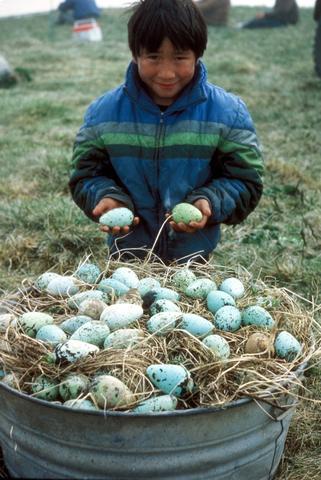
The eggs are divided into cryogenic containers and stored in supercold (minus 150 C, minus 238 F) liquid nitrogen vapor freezers at the NIST Biorepository. Half are available for immediate research. The other half are kept for future generations of scientists to examine for new compounds of interest, retrospectively analyze trends in detected compounds, or reanalyze using new methods. The first eggs were from seabirds known as murres, which were collected by Alaska Native subsistence harvesters and USFWS staff, who monitored colonies for productivity.
Eggs are ideal tissues to study because they are easy to collect and handle, do not decompose rapidly in the field, and are distinct units, representing not only the mother’s condition at the time of laying but also the baseline of the next generation. In addition, there are several long-term studies using seabird eggs in other countries, notably Canada, Norway and Sweden, so global comparisons are possible.
Common murres and thick-billed murres were chosen for biomonitoring because they:
- lay a single egg and most will re-lay if the egg is lost early in the season;
- are an important subsistence food, providing a direct connection to human health while eating many of the same fish and invertebrates that we do; and
- stay within the North Pacific region year-round, while relatives are distributed around the north polar regions for comparison.
Common murres are found farther south and feed on midwater forage fish, while thick-billed murres are found farther north and feed at the depths on fish and invertebrates that live on the ocean floor. While in the middle of the range, murres may breed together.
In addition to murres, black-legged kittiwakes were added to STAMP to represent surface foragers, and glaucous gulls and glaucous-winged gulls at the request of the Bureau of Indian Affairs as other important subsistence foods. Unfortunately, these seabirds are opportunistic feeders from lower on the food chain and have multiple-egg clutches, so from a scientific standpoint it was difficult to do much more than provide some baseline measurements rather than to make comparisons of sites and over time.
Two Decades of Research
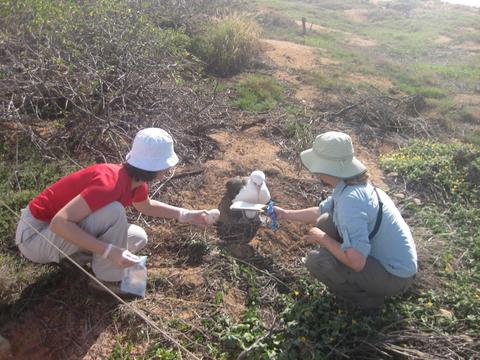
In 2010, the 111th U.S. Congress directed NIST “to expand its capabilities and resources in the Pacific region through a Pacific Islands component of NIST and … to expand its biodiversity storage capabilities in the region.” STAMP was expanded following a biomonitoring checklist, and after discussions and a workshop with collaborators, we determined that Laysan albatross and black-footed albatross were best to add to the collections from Alaska. While only a single egg is laid, and it is generally not re-laid if lost, there are many female-female pairs who both lay an egg and then kick one out of the nest, which we collect.
(Yes, there are seabirds with same-sex relationships! The lives of birds, once thought to be examples of long-term monogamous relationships and “loving” courtship displays, are closer to soap-opera stories with extra-pair affairs and uncertainty over who will get to live. For more details see this paper by Lindsay Young and other colleagues.)
There is also a program to help prevent military aircraft from striking birds, where eggs are moved from near the airfield to “adoptive parents” who had nonviable eggs on the north shore of Kauai in the Hawaiian Islands. We are able to collect nonviable eggs during that transfer and any viable eggs that were unable to be placed.
Albatrosses also feed on fish and squid (and unfortunately, plastics) in the southern Bering Sea and northern Pacific, while having highly site-specific breeding in both the mainland and northwestern Hawaiian Islands, thus integrating the entire North Pacific region and providing a valuable counterpart to the murre eggs that remain in the northern reaches. Albatrosses are also tagged with a leg band, allowing for repeat sampling from the same mother. Brown booby and sooty tern were added to enhance the geographic range beyond the Hawaiian Islands, and the endangered Hawaiian petrel was added to opportunistically sample the nonviable eggs of this important species.
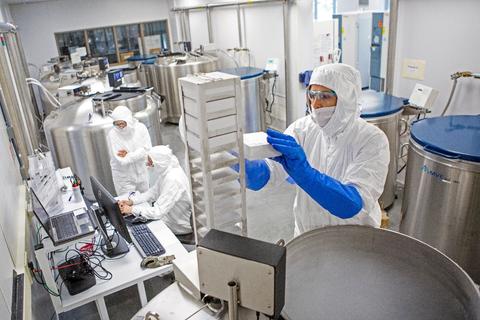
To date, 2,588 seabird eggs from 55 colonies throughout the North Pacific have been processed and their contents archived in the NIST Biorepository in 34,975 individual frozen samples. The membranes and eggshells are also archived either at the University of Alaska Fairbanks Museum, Hawaii Pacific University, or most recently at the NIST Biorepository to better preserve genetic material, which may be degraded at room temperatures. About one-third of the samples have been analyzed for contaminants created by or, in the case of mercury, modified by human activities. We have learned that the amounts of contaminants found in murre eggs vary by species, geography and over time, and we have contributed to global comparisons. Recently, we learned that some of the contaminant changes are correlated to large-scale oceanic patterns. We are also exploring ways to tell the difference between Laysan and black-footed albatross eggs, which are virtually indistinguishable to us, by measuring mercury levels in the eggs at Midway Atoll. We are also trying to determine if machine learning can be used to identify species and geographical differences based on contaminant patterns.
What’s Next?
STAMP is a long-term project that has lasted past the original founders’ careers and hopefully continues long past the current collaborators, including myself. More research is needed to examine the changing levels of contaminants over time in albatross, especially from sibling eggs, and to continue the monitoring of murres, which have faced systematic failure and mass die-offs the past few years correlated with an unusually large mass of warm water that appeared off the coast of Alaska. We can use seabird eggs to monitor changing contaminant levels, and, as canaries did in mines, they may provide early warning signs of environmental damage if we will heed the call. The story is now in the hands of the next generation to use these two decades of samples to reveal even more about our natural world and our effect on it using new instrumentation and methods.


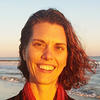



thanks